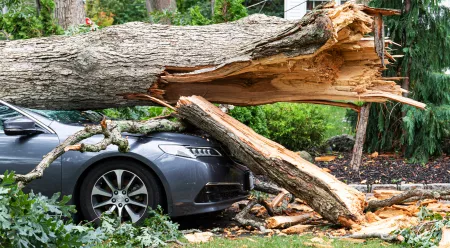*This blog was recently updated with new information
Getting a car seat for a child is not an easy task, and can be even more challenging if you are a new parent. There are stages, ages, charts, measurements and even laws that govern the use of car seats, and it can be a lot. Car seat laws and regulations in Canada go up to 12 years. Using the wrong car seat for your child can not only land you in trouble but also diminish your child’s safety, especially in the event of an accident. Confused about whether to get forward, rear-facing or booster car seats for your little one? Here is a comprehensive guide that will help you pick the right choice based on your province and keep your child safe and comfortable as you take that short or long drive.
Car seat stages for kids in Canada
There are four established stages or styles of car seats for children in Canada.
Stage 1: Rear-facing seats - The rear/ back-facing seat puts the child looking out the rear window with their back facing the driver. It is the safest position from the newborn stage and provides support for the child’s neck and head. While it is mandatory from the newborn stage, the limit depends on the jurisdiction. However, the basic recommendation is for parents, guardians and caregivers to keep the Stage 1 seat until the child outgrows the weight and height restrictions. Sometimes, a child can outgrow the back-facing seat before reaching the province’s minimum weight and age requirements. In this case, purchasing a convertible seat, one that can be set either rear and forward-facing, is recommended.
Stage 2: Forward-facing seats - This is a forward-facing seat that places the child in the same direction as other passengers. It can only be used by a child who has surpassed the stage 1 requirements. It enhances safety with the five-point harness. To ensure it does not move from the car’s seat in the event of an accident, it is installed with the rear tether strap.
Stage 3: Booster Seats - Recommended only for children who are ready to switch to this stage based on their physical development and also behaviour, this is a booster car seat used together with the car’s safety belt. Why should a child’s behaviour be checked before moving to this stage? Some children, despite reaching the required minimum weight, age and weight for
this stage can tuck their shoulder behind their back or even unbuckle a seat belt when the vehicle is in motion. The booster seat ensures that the safety belt is correctly strapped on the child’s shoulder and does not climb onto their neck.
Stage 4: Seatbelts- At this stage, your child can use the normal seat belts in your car. However, it is essential to ensure that the beltfits correctly. Also, your child should be past the minimum weight, age, and height requirement based on your province.
START A QUOTE
At what age can children sit in the front seat?
While Transport Canada recommends that children should not sit in the front until the age of 13, some provinces allow children above the age of 12 to sit at the front.
Car seat laws in Canada by province
As we discussed above, car seat laws vary across Canada. It is important to determine the car seat regulations in your province to avoid being on the wrong side of the law. Knowing the car seat laws also comes in handy when travelling to another province, as it becomes easier to plan your travel accordingly.
Ontario
In Ontario, children should use back-facing car seats till they reach 10kgs (22 lbs.). The child can then transition to a forward-facing car seat until they reach 18kgs (40 lb). If the weight of the child ranges between 18 kg- 36 kg (20-40 lb.), they can transition to the booster car seats. Booster seats in Ontario should also be used by children below the age of eight and
those who are less than 4.9” (1.45m) tall.
Alberta
In Alberta, children should use back-facing car seats until they are two years old or as per the manufacturer’s height and weight limit. The child can then transition to the fore-facing seat until they turn six years old or weigh 18 kgs (40 lbs). Alberta does not have a specific law regarding combination or booster seats.
British Columbia
In British Columbia, infants should use the back-facing car seats up to the age of 12 months or till they surpass 9 kgs (20 lbs). They should then transition to the front-facing car seats until they are 18 kgs (40 lbs) where they can then use the booster seats until they reach the age of 9 years old, or a height of 145 cm (4.9’’) - whichever comes first.
Nova Scotia
Nova Scotia requires children to be secured to a back-facing seat up to the age of 1 year and a weight of 10 kgs (22 lbs). They can then use a car seat until they weigh 18 kg (40 lb). In Nova Scotia, a booster seat should be used until the child reaches 9 years or attains a height of 145 cm.
New Brunswick and Manitoba
These two provinces have the same car seat laws. Children are required to be safely secured in a car seat or booster seat that is suitable for their weight, age and height. Children can use booster seats until they reach the age of 9 years, attain the height of 145 cm (4’9”) or weigh 36 kg (80 lb).
Prince Edward Island
Children should be safely secured in a back-facing car seat up to the age of one or the weight of 10 kgs (22 lb). They can then transition to a car seat until they weigh 18 kgs (40 lb). A booster car seat should be used until the child is 10 years old, 145 cm (4’9”) or as per the manufacturer’s guidelines.
Newfoundland and Labrador
Children should use back-facing car seats until they weigh a minimum of 9 kg (20 lb). They can then transition to a front-facing car seat until they weigh 18 kg (40 lb). As per the regulations in the two provinces, children should use booster car seats until the age of nine or up to the point where they weigh 37 kg (81.5 lb) or are 145 cm (4’9”) tall.
Yukon
Children are required to be safely secured in back-facing car seats until they can walk unassisted or are over 10 kg (22 lb). They can then transition to a car seat suitable for the child’s weight, age, and height until they attain a weight of 22 kg (48 lb). A booster car seat can then be used until the child weighs 45 kg (100 lb) or is 145 cm (4’9”).
Saskatchewan
A child must be safely secured in a car seat until they are 18 kgs (40 lb). The province does not have rules on rear-facing seats. The child should also use a booster until the age of 7, they are 145 cm (4’9”) tall or reach 36 kg (80 lb).
Quebec
Children must use car seats that are ideal for their weight, age, and height. They should also use a booster seat until they are nine years old or 145cm (4’9”).
Nunavut
A child must be safely strapped in a back-facing car seat until they reach 9 kgs (20 lb). They can then use a car seat until they attain a weight of 18kg (40lb). Nunavut does not have booster car seat laws. Simply fastening your child to the car seat does not guarantee safety and effectiveness.
You can have the right car seat as per the province laws, but not have sufficient protection in the event of an accident. As such, you have to ensure that the car seat is properly installed. But how do you do this?
● Ensure that the car seat is placed at the safest place - The initial car seat installation step is ensuring that it is placed at the safest location in the car. The safest car seat for a child is the back seat. If you are installing a booster seat for an older child, ensure that the seat has a shoulder and lap belt. And if the middle position only has a lap-belt, use a harnessed car seat. A child using a backless booster seat should be placed in a seat with a headrest.
● Follow the manufacturer’s installation guide - This is especially vital for the convertible rear to front car seats. Ensure you install the car seat as per the manufacturer’s guidelines. If you are unsure of how to do it properly, always ask for help. Also, ensure that you fit the child firmly in the seat so that there is no excessive movement.
● Adjust straps accordingly - Before every trip, ensure you adjust any slack in the harness. They should always be snug and tight but not too tight, especially when the child is wearing heavy clothing. Also, the lap section of the harness should be placed at the hips or pelvis, but not the child’s stomach.
● Always check the car seat expiration - All car and booster seats sold in Canada have expiry dates. Using an expired car seat in Canada isn’t illegal under federal law, but it is considered unsafe and may violate provincial child restraint regulations. Transport Canada requires car seats to meet current safety standards, so once expired, it no longer meets Canada Motor Vehicle Safety Standards (CMVSS).
An expired car seat is not recognized as “approved” equipment by Transport Canada, and may be viewed as noncompliant, putting drivers at risk of fines or liability in the event of an accident. Also, never use a car seat that has been involved in a car accident, whether it was damaged or not. Once it is involved in a collision, it’s considered immediately expired.




